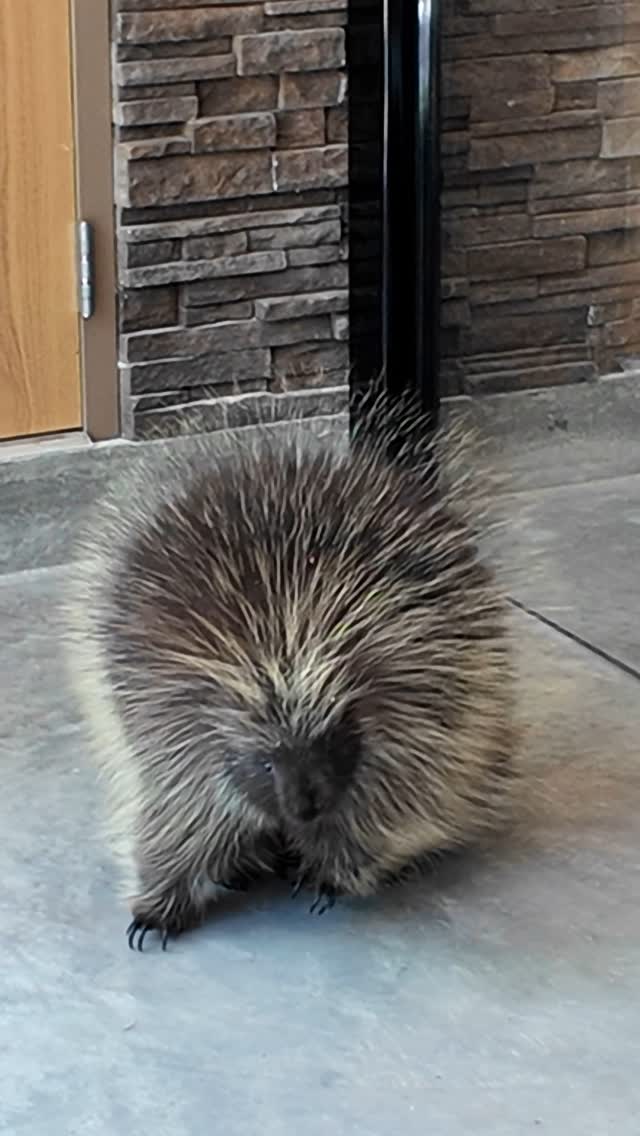- The defensive mechanisms of the North American porcupine.
- The biological structure and function of porcupine quills.
- The ecological role and behavior of porcupines in their natural habitat.
- Interaction of porcupines with predators and their impact on the ecosystem.
- Conservation status and efforts to protect porcupine populations.
The Spin Defense Mechanism
The North American porcupine is a remarkable example of nature’s innate defense strategies. Rather than relying on aggression, these creatures utilize a spinning motion to safeguard themselves from predators. When threatened, a porcupine will turn its back and perform a spin, presenting a bristling barrier of sharp quills. These quills, totaling over 30,000 on a single animal, are loosely attached and can embed themselves into an attacker, serving as a potent deterrent. The spinning action not only showcases these quills but also makes striking the porcupine’s vulnerable front exceedingly difficult for predators such as bobcats and coyotes. This defense method is a sophisticated survival strategy, enhancing the porcupine’s ability to deter attackers while reducing the likelihood of physical confrontation.
Biological Structure: Quills and Their Function
Porcupine quills are a marvel of evolutionary biology. Each quill is a modified hair, coated with keratin, making it stiff and durable. The quills are barbed at the tips, allowing them to become lodged in an attacker’s skin and making removal painful and difficult. This design ensures that predators think twice before engaging with a porcupine. Furthermore, quills are not poisonous, but the injuries they inflict can still lead to serious infections if not treated, reinforcing their effectiveness as a defense mechanism. The quills can even regrow if lost, allowing porcupines to maintain their formidable defense throughout their lifetime.
Ecological Role and Behavior
Porcupines are primarily herbivorous, relying on a diet of leaves, bark, and fruits. Their feeding habits contribute to the health and diversity of their ecosystems, as they help in controlling plant growth and spreading seeds. Additionally, porcupines are solitary animals, which minimizes competition for food resources in their habitat. Despite their solitary nature, they communicate through sounds, scent markings, and visual cues, which are all important for mating and territory establishment.
Porcupines are nocturnal, often active during the night when predators are less likely to spot them. During the day, they rest in trees or burrows, making use of their excellent climbing skills. These behavioral adaptations enhance their survival and allow them to thrive in various environments, from forests to grasslands.
Interaction with Predators
Despite their formidable defenses, porcupines are not invincible. Predators like fishers, a type of weasel, have developed specific hunting strategies to prey on them. Fishers avoid the quilled back and aim for the porcupine’s unprotected face and belly. This predatory pressure maintains a balance within the ecosystem, keeping porcupine populations in check.
Porcupines also serve as prey for larger omnivores and carnivores when other food sources are scarce. This interaction places them as a crucial link in the food web, supporting biodiversity and ecological stability within their environments.
Conservation Status and Protection Efforts
Though porcupines are not currently endangered, they face threats from habitat loss, road collisions, and human-wildlife conflict. With increasing urbanization, these factors can significantly impact their populations. Protecting their natural habitats and promoting coexistence with humans are essential components of wildlife conservation strategies.
Many conservation programs focus on educating the public about the ecological importance of porcupines and implementing measures to mitigate anthropogenic threats. Efforts such as establishing wildlife corridors and creating protected areas help maintain porcupine habitats, ensuring these unique creatures continue to play their role in nature.
Porcupines are a testament to the complexity and effectiveness of natural defense mechanisms. By understanding their biology and behavior, we can better appreciate and protect these fascinating animals, ensuring they remain an integral part of our world’s biodiversity for future generations.
*****
Source Description
🦔 Spin to Win: Nature’s Built-In Defense!
Ever wonder how the North American porcupine defends itself? Contrary to popular belief, these prickly creatures don’t shoot their quills—they spin!
When threatened, a porcupine will turn its back, raise its quills, and often spin in place to deter predators from attacking its more vulnerable front. Those 30,000+ barbed quills are loosely attached and can easily embed in an attacker’s skin, making them an extremely effective deterrent. Even large predators like bobcats and coyotes think twice!
Porcupines are mostly peaceful herbivores, but when it comes to defense, they’re masters of passive protection. A spin move backed by armor? That’s one wild way to stay safe.
Our porcupine Danni was slightly startled by an enrichment branch being given to her so she showed us how tough she is. After checking it out, she promptly went back to looking for sweet potato 🍠
Stop by and learn more about Danni and her species!


